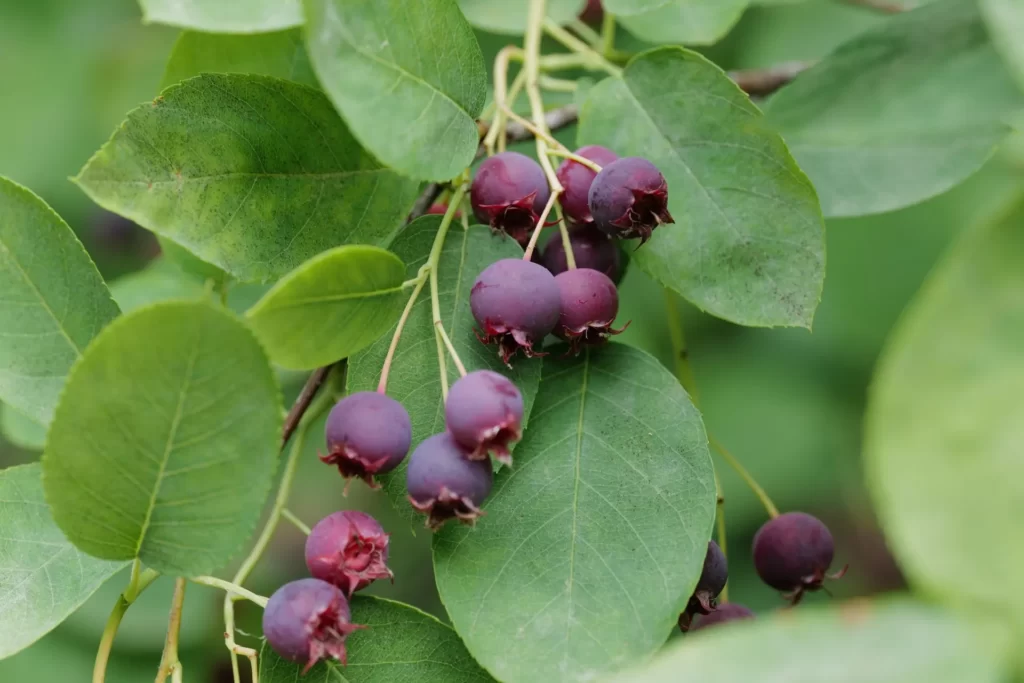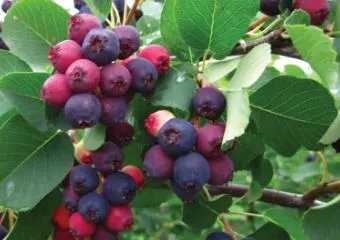How to Farm Juneberry: Benefits and Profit Per Acre Calculation
Juneberry, also known as serviceberry or Amelanchier, is a versatile and highly beneficial fruit that is gaining popularity among farmers and gardeners alike. This article will guide you through the process of farming Juneberry, highlighting its numerous benefits and providing insights into calculating potential profits per acre. Whether you’re an experienced farmer or a beginner looking to diversify your crops, Juneberry could be a lucrative and rewarding addition to your agricultural endeavors.
Table of Contents
- Introduction to Juneberry
- Choosing the Right Varieties
- Ideal Climate and Soil Conditions
- Planting and Maintenance
- Pruning Techniques for Optimal Growth
- Pest and Disease Management
- Harvesting at the Right Time
- Post-Harvest Handling and Storage
- Health Benefits of Juneberry
- Culinary Uses and Value-Added Products
- Market Demand and Trends
- Calculating Potential Profits per Acre
- Factors Affecting Profitability
- Sustainable Farming Practices
- Conclusion

Introduction to Juneberry
Juneberry, scientifically known as Amelanchier, is a deciduous shrub that produces delicious and nutritious berries. These berries are often compared to blueberries for their taste and appearance. Juneberries are rich in antioxidants, vitamins, and minerals, making them a sought-after fruit in both the culinary and health industries.
Choosing the Right Varieties
There are several varieties of Juneberry to choose from, each with unique flavor profiles and growth habits. Some popular varieties include ‘Autumn Brilliance,’ ‘Allegheny,’ and ‘Regent.’ When selecting varieties, consider factors such as climate, soil type, and intended use (fresh consumption or processing).
Ideal Climate and Soil Conditions
Juneberry thrives in temperate climates with cold winters and moderate summers. It adapts well to various soil types, but it prefers well-draining, slightly acidic soils. Adequate sunlight is essential for optimal berry production.
Planting and Maintenance | juneberry red bull
Plant Juneberry saplings in the early spring or fall, ensuring proper spacing between plants for good air circulation. Regular watering and mulching will help retain moisture and suppress weed growth. Applying organic fertilizer annually will promote healthy growth.
Pruning Techniques for Optimal Growth
Pruning is crucial for maintaining the shape and vigor of Juneberry plants. Prune during the dormant season to remove dead or diseased branches and encourage new growth. Proper pruning also enhances berry production and quality.

Pest and Disease Management
Juneberry is relatively resistant to pests and diseases, but it’s important to monitor for issues like aphids, mites, and rust. Implement integrated pest management strategies and choose disease-resistant varieties to minimize potential problems.
Harvesting at the Right Time
Harvest Juneberries when they are fully ripe and have reached their deep color. Gently pluck the berries to avoid damaging the plant. A single plant can yield a significant amount of berries, especially as it matures.
Post-Harvest Handling and Storage
Handle Juneberries with care to prevent bruising and extend their shelf life. Store them in a cool, humid environment or consider freezing or processing them into jams, jellies, or baked goods.
Health Benefits of Juneberry
Juneberries are nutritional powerhouses, packed with vitamins A and C, as well as essential minerals like iron and potassium. Their high antioxidant content contributes to improved cardiovascular health and a strengthened immune system.
Culinary Uses and Value-Added Products
These versatile berries can be enjoyed fresh, added to smoothies, or used in various culinary creations. Consider producing value-added products like jams, syrups, and pies to diversify your product offerings and increase profitability.
Market Demand and Trends | juneberries
The demand for fresh and locally sourced produce is on the rise. Juneberries’ unique flavor and health benefits make them a sought-after ingredient for both consumers and chefs. Establishing connections with local markets, restaurants, and grocery stores can enhance your market reach.
Calculating Potential Profits per Acre
Calculating potential profits involves estimating costs, including initial investments, maintenance, labor, and marketing expenses. Balance these costs against projected revenue based on yield, market prices, and demand to determine your potential profit per acre.
Factors Affecting Profitability | Amelanchier
Several factors can impact the profitability of your Juneberry farm, including weather conditions, pest pressures, and market fluctuations. Diversifying your crops and adopting sustainable practices can help mitigate potential risks.
Sustainable Farming Practices | red bull juneberry
Implementing sustainable farming practices not only benefits the environment but also enhances the quality of your berries. Consider practices such as crop rotation, cover cropping, and integrated pest management to create a resilient and eco-friendly farm.

Profit Calculation Example | June Berry | juneberry table
- Initial Investment:
- Cost of Juneberry saplings: $500
- Planting equipment and materials: $300
- Total Initial Investment: $800
- Maintenance Costs (per year):
- Watering, fertilizers, and pesticides: $200
- Labor (pruning, harvesting, etc.): $300
- Total Annual Maintenance Costs: $500
- Expected Yield:
- Yield per mature Juneberry plant: 10 pounds
- Number of plants per acre: 400
- Total Yield per Acre: 4,000 pounds
- Market Price:
- Average market price per pound of Juneberries: $4.50
- Revenue:
- Total Revenue per Acre = Total Yield * Market Price = 4,000 lbs * $4.50 = $18,000
- Total Costs:
- Total Costs per Acre = Initial Investment + (Annual Maintenance Costs * Number of Years)
- Assuming 3 years for the plants to mature and stabilize yields:
- Total Costs per Acre = $800 + ($500 * 3) = $2,300
- Gross Profit:
- Gross Profit per Acre = Total Revenue – Total Costs = $18,000 – $2,300 = $15,700
- Net Profit:
- Net Profit per Acre = Gross Profit – Initial Investment = $15,700 – $800 = $14,900
| Category | Value |
|---|---|
| Initial Investment | |
| Cost of Saplings | $500 |
| Planting Equipment | $300 |
| Total Initial Investment | $800 |
| Maintenance Costs (per year) | |
| Watering, Fertilizers, Pesticides | $200 |
| Labor (pruning, harvesting, etc.) | $300 |
| Total Annual Maintenance Costs | $500 |
| Expected Yield | |
| Yield per Mature Plant (lbs) | 10 lbs |
| Yield per Mature Plant (kg) | 4.54 kg |
| Number of Plants per Acre | 400 |
| Total Yield per Acre | 4,000 lbs (1,814 kg) |
| Market Price | |
| Average Price per Pound | $4.50 |
| Revenue | |
| Total Revenue per Acre | $18,000 |
| Total Costs | |
| Initial Investment | $800 |
| Annual Maintenance Costs (3 years) | $1,500 |
| Total Costs per Acre | $2,300 |
| Gross Profit | |
| Gross Profit per Acre | $15,700 |
| Net Profit | |
| Net Profit per Acre | $14,900 |
In this example, after considering the initial investment, annual maintenance costs, expected yield, and market price, the potential net profit per acre from farming Juneberries could be approximately $14,900 over a span of 3 years. Keep in mind that these figures are based on hypothetical values and actual results may vary depending on factors such as weather conditions, pest management, market demand, and labor costs. It’s important to conduct thorough research and financial planning specific to your circumstances before embarking on any agricultural venture.
Conclusion
Farming Juneberries can be a rewarding endeavor that offers numerous benefits, from nutritious berries to potential profits. By following proper planting, care, and marketing strategies, you can establish a successful Juneberry farm that contributes to local food systems and your financial goals.
FAQs
Q1: Can Juneberries be grown in containers? A: Yes, Juneberries can be grown in containers, but ensure the container is large enough and has good drainage.
Q2: Are Juneberries self-pollinating? A: Most Juneberry varieties benefit from cross-pollination, so planting multiple varieties can improve berry production.
Q3: How do I prevent birds from eating my berries? A: Use bird netting or reflective tape to deter birds from consuming your berries. Q4: Can I use Juneberries in baking? A: Absolutely! Juneberries are fantastic for pies, muffins, and other baked goods. Q5: What is the typical harvest period for Juneberries? A: Juneberries are typically harvested from late spring to early summer, depending on your region.
You Can read this too
